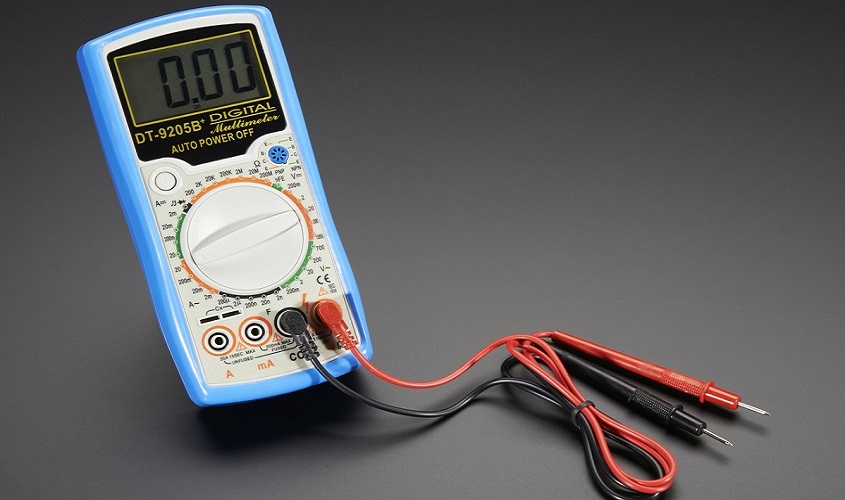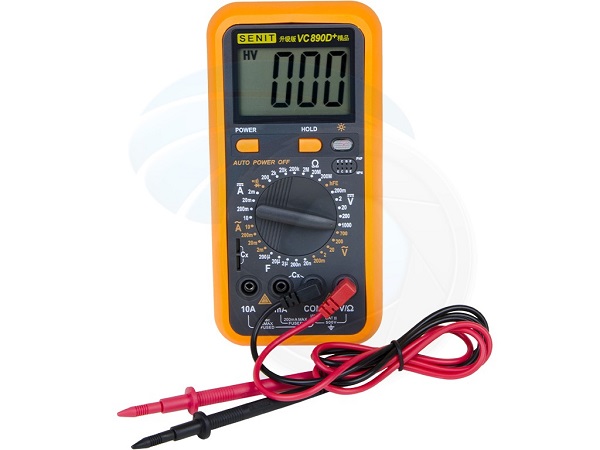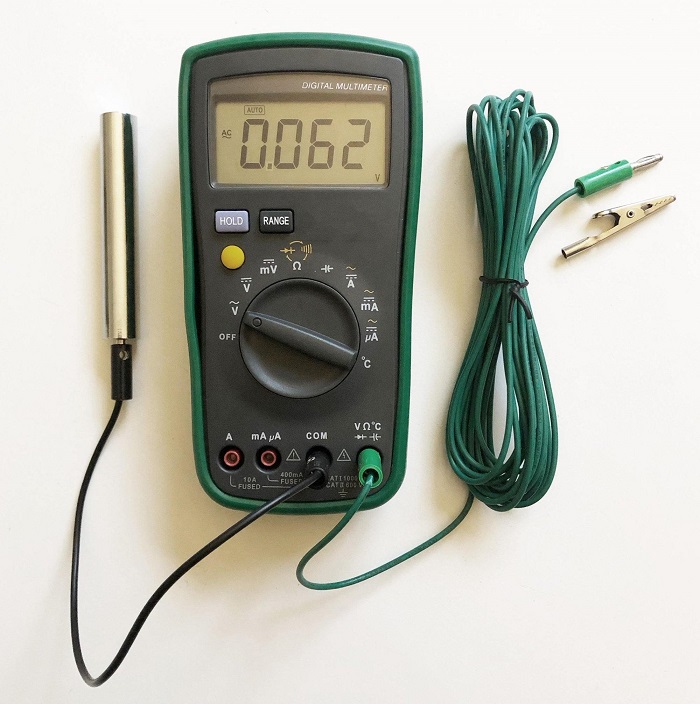Welcome to Linquip again! In this article, we are going to discuss the core difference between a multimeter and a voltmeter. Buckle up and keep reading.
What is a multimeter?
A multimeter is an electronics designer’s primary quality control tool and it is used to measure two or more electrical values—principally voltage (volts), current (amps), and resistance (ohms). It is a standard diagnostic tool for technicians in the electrical/electronic industries.
Making sure you have the right meter at the right price might take some planning. Some multimeters include additional specialized features or advanced options. Some technicians have specific requirements and may need a model targeted to meet their needs.
There are two primary types of multimeters: analog and digital. Each is designed to measure the same basic electrical values but differs in its method of measurement and display.
1- Analog Multimeters, as you would suspect, use classic analog dials for measuring voltage, current and resistance. These are certainly more primitive and are rarely used these days, however, some would argue that analog meters are more sensitive than their digital counterparts and they are still preferred by many. After the slightest change in DC voltage, the needle on an analog multimeter can deflect, which affects the accuracy of measurement readings and might not be something you see on a digital meter. If you are dealing with circuits with highly sensitive measurements, an analog multimeter might be right for your needs.
2- Digital Multimeters (DMMs) consist of an LCD display, a knob to select ranges, an analog-to-digital converter, and internal circuitry for signal conditioning. It is much more commonly used in today’s world and is primarily used to verify one of three factors of Ohm’s Law, voltage current and resistance.
To choose the right equipment and understand the difference between a multimeter and a voltmeter, it is vital for you to know each and every one of their features.
Features of Digital Multimeter
The Digital multimeter is the most advanced measuring instrument that makes use of modern Integrated circuits for making electrical measurements. Some of its features that make it famous in the eyes of professional technicians are:
- It is light in weight.
- Capable of giving more accurate readings.
- It measures lots of physical quantities like voltage, current, resistance, frequency, etc.
- It is less costly.
- It measures different electrical parameters at high frequencies with the help of special probes.
Digital multimeters combine the testing capabilities of single-task meters—the voltmeter (for measuring volts), ammeter (amps), and ohmmeter (ohms). Often, they include several additional specialized features or advanced options. Technicians with specific needs, therefore, can seek out a model targeted to meet their needs.
The face of a digital multimeter typically includes four components:
- Display: Where measurement readouts can be viewed.
- Buttons: For selecting various functions; the options vary by model.
- Dial (or rotary switch): For selecting primary measurement values (volts, amps, ohms).
- Input jacks: Where test leads are inserted.
Test leads are flexible, insulated wires (red for positive, black for negative) that plug into the DMM. They serve as the conductor from the item being tested to the multimeter. The probe tips on each lead are used for testing circuits.
Now, to understand the core Difference Between a Multimeter and a Voltmeter, we are going to explain what a voltmeter is and then compare a multimeter to a voltmeter.
What is a voltmeter?
A Voltmeter is an instrument that measures voltages of either direct or alternating electric current on a scale usually graduated in volts, millivolts (0.001 volts), or kilovolts (1,000 volts). Many voltmeters are digital, giving readings as numerical displays.
Voltmeters can also provide readings in analog form, by moving a pointer that indicates voltage on a scale, but digital voltmeters generally have a higher order of accuracy than analog instruments.
Working Principle of Voltmeter
The main principle of a voltmeter is that it must be connected in parallel which we want to measure the voltage. A parallel connection is used because a voltmeter is constructed in such a way that it has a very high value of resistance. So if that high resistance is connected in series then the current flow will be almost zero which means the circuit has become open.
If it is connected in parallel, then the load impedance comes parallel with the high resistance of the voltmeter, and hence the combination will give almost the same impedance that the load had. Also in the parallel circuit, we know that the voltage is the same so the voltage between the voltmeter and the load is almost the same and hence voltmeter measures the voltage.
For an ideal voltmeter, the resistance is to be infinity, and hence the current drawn is to be zero so there will be no power loss in the instrument. But this is not achievable practically as we cannot have a material that has infinite resistance.
Differences between multimeter and voltmeter
| Voltmeter | Multimeter |
| A voltmeter can measure only the potential difference between two points in an electrical circuit. | A multimeter is a multi-purpose instrument that can directly measure various parameters like potential difference, current, resistance, frequency, capacitance, etc. |
| To measure the resistance of a circuit, an ammeter is also required along with a voltmeter. | Multimeters can directly measure the resistance of a circuit. So no need to use a separate ammeter for this. |
| It is generally not used to test diodes or transistors. | Multimeters can be used to test diodes and transistors. |
| A voltmeter cannot substitute a multimeter. | A multimeter can substitute voltmeter. |
| Voltmeters are comparatively cheaper. | Multimeters are costlier as they consist of multiple parts for measuring various parameters. |
| The area of application of the voltmeter is narrow. | Multimeters have a wide area of applications for their capability to perform multifarious functions. |
Now you know the core difference between a multimeter and a voltmeter.
Hope you enjoyed the article! You can find similar content on Linquip, a professional network for equipment manufacturers, industrial customers, and service providers.
Buy Equipment or Ask for a Service
By using Linquip RFQ Service, you can expect to receive quotations from various suppliers across multiple industries and regions.
Click Here to Request a Quotation From Suppliers and Service Providers
Read More On Linquip





